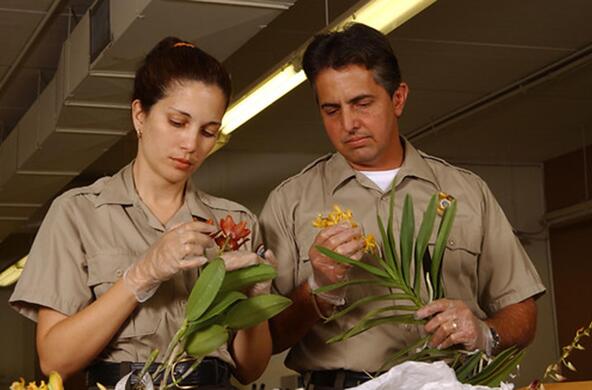Willie Nelson once sang that he only missed his ex-lover on three days: yesterday, today and tomorrow. This simple division of time works as well for invasive species as it does for heartbreak.
Yesterday's invaders include hundreds of species and pathogens that are now well established throughout our region. Examples include many popular sport fish, such as brown and rainbow trout, smallmouth and largemouth bass, and devastating diseases and pests, such as Dutch elm disease, chestnut blight, Japanese beetles and most of the garden slugs. Yesterday's invaders also include species that are hard to classify simply as beneficial or harmful, such as yellow iris and purple loosestrife.
What should we do about yesterday's invaders? Probably we should begin by determining their actual effects and not fall into the trap of believing they are entirely bad just because they are not native. Clearly, many are desirable. But others cause serious harm, so we don't want to welcome them with open arms.
For demonstrably harmful species, we might determine what management options are actually feasible. Usually, regionwide control is not possible — and even local control may be expensive, ineffective or have nasty side effects. As a result, management of yesterday's invaders may best be targeted by local programs to achieve specific goals. So while there is little hope of eliminating bush honeysuckle from North America, we might be able to control it on a nature preserve to benefit particular native animals and plants that it might be crowding out.
Today's invaders are just arriving in the valley, either directly from overseas, or after first landing elsewhere in North America. These are the invaders most likely to make headlines: Asian long-horned beetles, which threaten to cause tens of billions to trillions of dollars of damage to our trees, the infamous silver carp now making its way into the Great Lakes through the Chicago canal and the Chinese mitten crab, which recently appeared in the Hudson River.
Although ecologists usually can roughly estimate the effects of today's invaders, it's difficult to predict precisely the extent and cost of the damage they will cause (note the wide range in damage estimates for the Asian long-horned beetle). So to avoid making costly and irreversible mistakes, we should control these species wherever possible, unless they are demonstrably beneficial.
Luckily, we have more options for controlling today's invaders than yesterday's. We can mount intensive campaigns to eradicate the most harmful of these species as soon as they are detected.
For instance, the state Department of Environmental Conservation has been trying to eradicate the northern snakehead, a voracious predatory fish, from a lake in Orange County before it spreads out of control, and the U.S. Department of Agriculture has been engaged in a decades-long, multistate campaign, costing hundreds of millions of dollars, to eradicate the Asian long-horned beetle. We do not know if such programs will work, but they are much more likely to succeed in eradicating an invader than if we wait for it to become well established.
Even if we cannot eradicate today's invaders altogether, we often can slow their spread. Outreach targeted at boaters has probably significantly slowed the spread of zebra mussels — which even today have reached fewer than 10 percent of suitable lakes in the Great Lakes states — and erecting a barrier on the Erie Canal might keep the silver carp and other invaders from spreading from the Great Lakes to the Hudson River.
Even though thousands of invaders have already come into North America, thousands more are waiting for their chance, lurking in ballast tanks of ships, pet shops and plant nurseries. These pathways that will bring tomorrow's invaders to the valley usually won't discriminate between desirable and harmful species. Because we know some of tomorrow's invaders are capable of causing great harm to native species and our economy, it makes sense to control these pathways as much as possible. Fortunately, we have many options — technical, legislative and educational — to improve control of tomorrow's invaders.
Somehow I doubt Willie's lover ever came back, but his song does give us some insight into how we might deal with one of our most difficult environmental problems — and avoid heartbreak.






